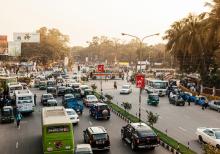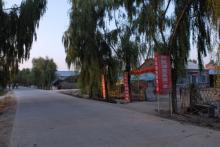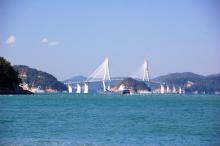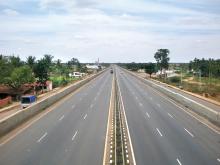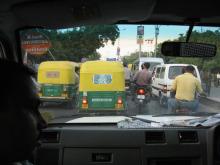Kiribati is benefiting from major improvements to its road infrastructure. Funding for the road development programme has been provided jointly by the World Bank, the Asian Development Bank (ADB), and the Australian Government. The improved road network on South Tarawa will help boost safety and economic development. The road is a vital shared communal asset for 50,000 people, the entire population of South Tarawa, as it is the lone vehicular transport route on the atoll. The project is seeing the upgrade o
Kiribati is benefiting from major improvements to its road infrastructure. Funding for the road development programme has been provided jointly by the World Bank, the Asian Development Bank (ADB), and the Australian Government. The improved road network on South Tarawa will help boost safety and economic development. The road is a vital shared communal asset for 50,000 people, the entire population of South Tarawa, as it is the lone vehicular transport route on the atoll. The project is seeing the upgrade of 32km of paved roads and upgrading 8km of feeder roads, securing access in key lengths of the journey between the seaport of Betio and the airport on Tarawa. The design includes the installation of footpaths, improved drainage, speed humps, solar street lighting, and road signage to improve safety.
Initiated in 2010, the US$57.5 million Kiribati Road Rehabilitation Project is the largest economic infrastructure investment in the country since World War II. The World Bank is the largest financier of the project with US$27 million and the project is the World Bank’s first-ever International Development Association-financed investment in Kiribati. The Government of Australia provided $16.4 million (A$17.8 million), ADB provided $14.4 million, and the Government of Kiribati contributed $2.6 million.
A comprehensive road safety campaign is also being launched as part of the improved road network. Prior to the road construction work commencing, extensive surveys had to be carried out for unexploded ordinances, as the route includes a site that saw significant fighting during World War II.
Initiated in 2010, the US$57.5 million Kiribati Road Rehabilitation Project is the largest economic infrastructure investment in the country since World War II. The World Bank is the largest financier of the project with US$27 million and the project is the World Bank’s first-ever International Development Association-financed investment in Kiribati. The Government of Australia provided $16.4 million (A$17.8 million), ADB provided $14.4 million, and the Government of Kiribati contributed $2.6 million.
A comprehensive road safety campaign is also being launched as part of the improved road network. Prior to the road construction work commencing, extensive surveys had to be carried out for unexploded ordinances, as the route includes a site that saw significant fighting during World War II.


